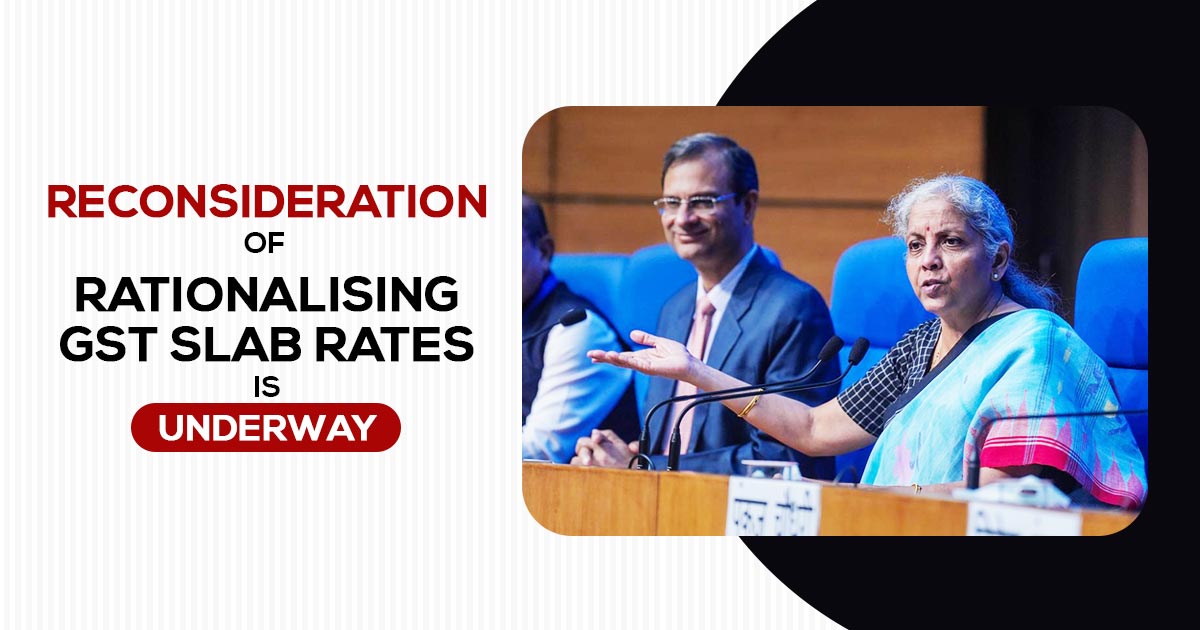
The government has revived efforts towards GST rate rationalization, evident in the reformation of the ministerial group within the GST Council. This group, previously tasked with streamlining the intricate tax structure and adjusting its multiple rates, had been dormant following changes in political dynamics.
Initially led by former Karnataka CM Basavaraj Bommai, it went inactive after the BJP’s electoral defeat in the state earlier this year. Despite indications from revenue officials earlier in 2023 that the much-awaited simplification and reconfiguration of GST rates were on hold, the recent reconstitution of the ministerial group signals a resurgence of focus.
The reformed group, now chaired by Uttar Pradesh Finance Minister Suresh Kumar Khanna, includes Karnataka’s revenue minister, Krishna Byre Gowda, among its seven members. This move underscores a renewed commitment to address the long-pending concerns of industries awaiting GST rate adjustments.
Despite the existence of four primary GST rate slabs – 5%, 12%, 18%, and 28% – the practical application encompasses nearly a dozen diverse rates, with certain goods even falling under a zero-rate category. Complexity arises due to factors such as packaging for specific food items and pricing considerations for goods like footwear and hotel accommodations, which determine their applicable tax rates.
With GST revenues consistently stabilizing at a robust level exceeding ₹1.6 lakh crore in recent months, tax experts and industry leaders have been advocating for the government to reignite the paused rate rationalization initiative.
“The reformation of the ministerial group signals a renewed focus on restructuring and simplifying GST,” remarked Sacchidananda Mukherjee, a professor at the National Institute of Public Finance and Policy. “An excess of tax rates creates significant compliance challenges.”
Read Also: GST Council 1st Meeting to 52nd Meeting Updates with PDF
He further emphasized the government’s comprehension of the urgency to streamline the rate structure, eliminating price-based tax settings and reducing multiple rates for enhanced tax compliance across industries. This move aims to provide greater certainty to investors while easing the workload for both the industry and the Revenue Department.
The unchanged terms of reference for the GoM indicate its potential to offer recommendations not just on GST rate simplification but also on the future of the GST Compensation Cess. In its previous meeting in October, the GST Council commenced discussions on a “perspective plan” regarding the imposition of a cess or surcharge beyond March 2026, the slated expiration date for the GST Compensation Cess.
Recommended: Full Guide to GST Invoice with Information & Correct Format
Confederation of Indian Industry president R Dinesh recently emphasized the necessity of streamlining GST rates into a three-slab structure to facilitate smoother business operations and curtail litigations stemming from classification disputes. He also advocated for a thorough reassessment of the GST Compensation Cess.
The terms of reference for the GoM explicitly outline its responsibility to scrutinize current tax slab rates, proposing alterations as necessary to ensure adequate resource allocation. It also mandates a comprehensive evaluation of the existing GST rate structure, encompassing special rates, with recommendations for simplification, potentially merging tax rate slabs to establish a more straightforward GST tax rate system.
Back in June 2022, the GST Council endorsed certain recommendations from the GoM, specifically revoking exemptions and concessional rates on various items. Finance Minister Nirmala Sitharaman had indicated that the ministerial panel had been granted an additional three months to devise a broader overhaul plan for GST rates.